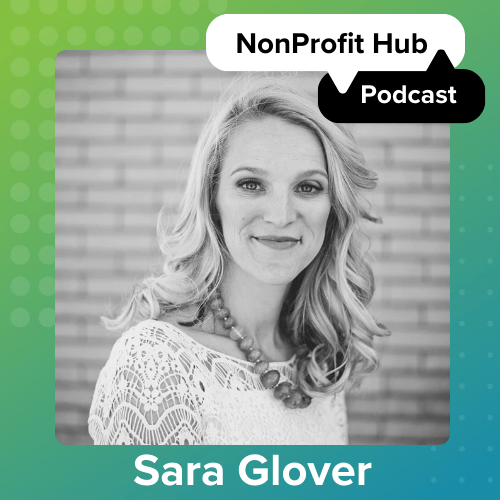Competition is a reality for every organization – for-profit or not. So many companies exist and when there’s even a slight overlap in their work, competition emerges. As a nonprofit, you need individuals to hear and be conscious of your mission in order to succeed. There are different ways to go about that, though, which begs this question:
Should you stick it out alone or weather-the-storm alongside another organization?
Unfortunately, there’s not one right answer due to the nonprofit sector’s extensive diversity. However, knowing your organization and how competition in our sector affects you can make that decision a bit more straightforward. We explored this topic with Derrick Feldmann, president of Achieve, a full-service research and marketing agency for causes. He offered up his knowledge on nonprofit competition and what your organization can do to get ahead.
Knowing Your Nonprofit
Before you concern yourself with what other organizations are doing, you should get familiar with your own organization. Understanding your own goals and your nonprofit’s impact will keep you from getting too caught up in the comparison game. Feldmann gave us some objectives for nonprofits to work toward when trying to wiggle their way through a crowded market.
First off, nonprofits need to be paying attention to their actual social return on investment. “It is imperative to help the community understand how and why the issue their organization addresses is so imperative to overcome,” Feldmann said. It’s necessary for you to look at the people your organization is serving and ask yourself how your work is actually changing lives. Mission-driven organizations grow stronger when you bridge the gap between the people who affect change for your cause and the people that are directly affected by it.
Mission is a key driver for nonprofits, but a nonprofit’s mission by itself isn’t necessarily a go-to differentiator. The nonprofit sector is saturated with causes of all shapes and sizes. With so many organizations working all over the world, there’s bound to be overlap. You can stand out by taking a different style and approach to your mission. As Feldmann explains, “It’s how the general population understands those differentiating factors, despite similar services that makes the difference.” By finding the people that both support and are influenced by your cause, you can consider the best approach to take when communicating your mission to them.
Nonprofit Competition
Once you’ve established your internal approach, pay attention to the competition that’s developing outside your organization. No matter the sector, competition is an issue that can’t be ignored. However, depending on how you do business, it can work in different ways. Here’s Feldmann’s take on competition in the for-profit and nonprofit worlds.
How Competition is the Same Between Sectors
In the nonprofit world, two different organizations might compete over things like a related cause and target audience. Each organization has to take a different approach as a result. For example, the first organization might offer complimentary services for their beneficiaries, while the other focuses on generating awareness and public acceptance of their cause. The same situation exists in the for-profit sector. In the end, organizations that can’t bring the public along with them – or for-profits that aren’t able to convince customers to buy their product, service or good – eventually don’t make it.
How Competition is Different Between Sectors
Nonprofit competition doesn’t just exist between entities. In the for-profit world, there’s a wealth of products, goods and services seeking the consumer’s dollar. In the nonprofit world, you’re seeking someone’s dollars unrelated to those things. Nonprofits don’t just compete against other organizations that focus on the same issue; they’re also competing for the public’s attention for their mission and why it should be supported. Donors aren’t necessarily the direct beneficiaries of the dollars that they give, so those organizations are built upon the concept that individuals will readily give resources to help others. Competition between nonprofits results because they’re all looking at the same person’s dollar to help the people they serve.
Nonprofit Partnerships
When competition gets steep, partnering with other nonprofit or for-profit organizations can have a “Justice League effect,” joining forces together for the greater good. Organizational partnerships aren’t for everyone, though – it’s difficult to find a team you’re compatible with in the first place, and implementing a plan between two entities takes a lot of hard work. Yet in today’s competitive market, partnerships can hold some serious bonuses; for some organizations, they serve as the most effective means to achieving a mission.
Feldmann had some valuable insight for organizations that are deciding whether or not a partnership is the right next step.
Problems and Perks
Most often, the biggest challenge with partnerships is getting to a place where both organizations are ready to seek a partner. “There’s a lot of pride and ownership in any field, and the nonprofit field is especially passionate about the work being done for beneficiaries,” said Feldmann. Cooperation isn’t smooth sailing from there, either. When two teams combine with different operations and metrics, it can be hard to form mutually beneficial goals and a compatible relationship.
Despite that, forging a partnership also has its perks. It can include obvious benefits like the reduction of operational or programmatic expenses – but your opportunities increase when you think a little outside of the box. Feldmann suggested that partnerships don’t have to be between organizations that do the same work. Instead, a more holistic approach can help partnerships rise to the next level by solving more than one problem for your cause.
Feldmann explained this with an example: “An organization in the cancer space focuses on the individual affected by cancer, and could consider partnering with an organization focused on caregivers. Such a partnership could create a more holistic approach to assistance.” You have double the brainpower, so your partnership has potential to make double the impact.
How to Make it Work
Clarity is a top priority when pursuing an organizational partnership. The best partnerships occur when both parties have a clear understanding of their roles and their long-term value to the relationship. Feldmann expressed the importance of a distinct connection between work and reward within those roles. He explained, “Compatible partnerships are created when there’s a clear delineation between the performance of each organization and how each performance leads to one desired outcome for the good of the beneficiary.”
Moreover, organizations should have specific metrics in place to measure their respective performances and a grasp on how the public is going to understand and participate in the partnership. If both organizations have a solid understanding of this from the get-go, it’ll be easier to jump into action later on.
__________
What’s the best approach for your nonprofit to stand out in a jam-packed market?
Remember: the key is to begin internally, then focus your sights outward. Knowing your organization is an important first step to approaching competition and considering other options like organizational partnerships. Once you have a handle on those pieces, you’ll get a step up in the nonprofit world.
Do you have thoughts of your own? Drop some knowledge in the comments box below or shoot us a tweet.






